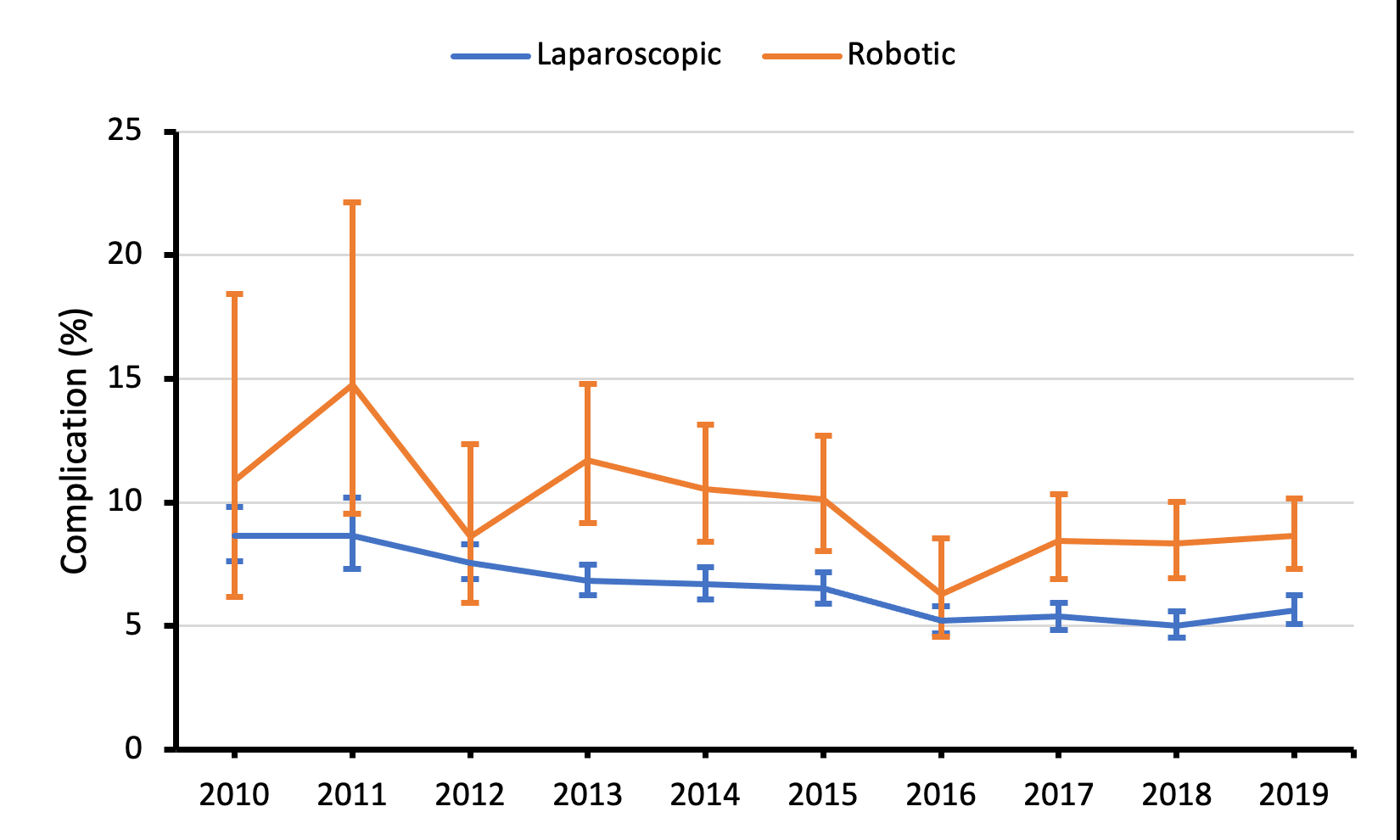ROBOTIC HIATAL HERNIA REPAIR ASSOCIATED WITH HIGHER MORBIDITY AND READMISSION RATES COMPARED TO LAPAROSCOPIC REPAIR
Julie A. Klock*, Kalyana Nandipati, Ryan W. Walters
General Surgery, Creighton University School of Medicine, Omaha, NE
Background and Aims: Minimally invasive techniques have been used for repair of symptomatic hiatal hernias. Robotic-assisted repairs have been increasingly used as an alternative approach with unproven benefits. The aim of this study was to compare the outcomes between laparoscopic and robotic-assisted repair of hiatal hernia using a large nationally representative database.
Methods: The Nationwide Readmissions Database (NRD) was used to identify all adult patients who underwent laparoscopic or robotic hiatal hernia repair from 2010 to 2019. Primary outcomes included post-operative complications and 30- and 90-day readmission rates. Secondary outcomes included in-hospital death, length of stay, and inflation-adjusted hospital cost. Multivariable models were estimated for overall complication and readmission rates. All presented hospitalization counts are weighted; all analyses accounted for the NRD sampling design.
Results: An estimated 521,906 hospitalizations met inclusion criteria, of which 10.2% included robotic repairs. Compared to laparoscopic repair, hospitalizations that included robotic repairs had patients that were older (56 vs. 51 years) with procedures completed more often in urban teaching hospitals (74.4% vs. 67.3%). Robotic repair was associated with a higher overall complication rate (9.0% vs. 6.5%, odds ratio [OR]: 1.4, 95% CI: 1.3-1.6, p < .001) primarily driven by renal and respiratory complications; however, the trend showed more similar complication rates across years (Figure 1). The higher overall complication rate associated with robotic repairs remained after adjusting for patient and facility characteristics (adjusted OR [aOR]: 1.3, 95% CI: 1.2-1.5, p < .001). Robotic repairs were also associated with higher 30-day readmission rates (6.0% vs. 7.1%, aOR: 1.2, 95% CI: 1.1-1.3, p < .001) and 90-day readmission rates (9.2% vs. 10.8%, aOR: 1.2, 95% CI: 1.1-1.3, p <.001). In-hospital mortality rates were similar (0.3% vs. 0.2%, p = .162) with clinically similar lengths of stay (1.4 vs 1.2 days, p < .001). Higher hospital costs were associated with robotic repairs ($16,400 vs. $12,500, p < .001).
Conclusion: Our analysis suggests that robotic repairs were associated with higher unadjusted and adjusted complication and readmission rates. The overall complication rate has shown a trend towards improvement which may be a result of increasing experience with robotic surgery.
Figure 1. Year-over-year trend in complication rates stratified by repair type. Error bars represent 95% confidence intervals.
Back to 2022 Abstracts
